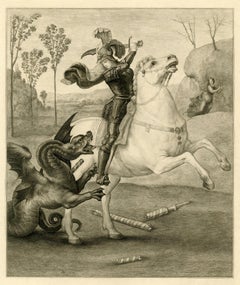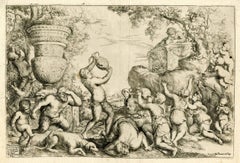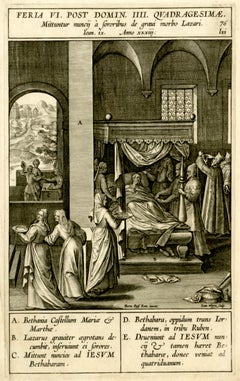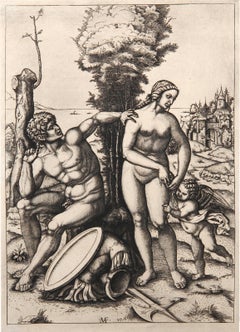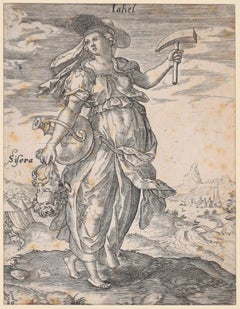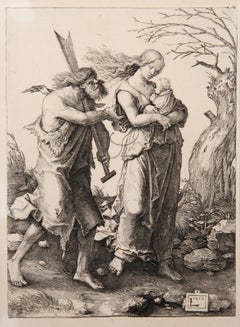Items Similar to Sextus Tarquinius Raping Lucretia
Want more images or videos?
Request additional images or videos from the seller
1 of 6
Georg PenczSextus Tarquinius Raping Lucretia1546-1547
1546-1547
$1,700
£1,295.90
€1,480.47
CA$2,392.14
A$2,620.13
CHF 1,379.50
MX$31,270.44
NOK 17,580.51
SEK 16,071.23
DKK 11,063.09
About the Item
Sextus Tarquinius Raping Lucretia
Engraving, c. 1546-47
Signed with the intials in the plate (see photo)
From: "Four Scenes of Early Roman History"
An early impression with plate tones
One day, Sextus Tarquinius, the son of King Tarquin, visited Collatinus's home while Collatinus was away. Sextus was struck by Lucretia's beauty and was overwhelmed by lust for her. In the dead of night, Sextus returned to the house, threatened Lucretia with a dagger, and raped her.
Condition: Early impression with plate tone
Image size: 3-1/4 x 4-5/8"
Reference: Hollstein 130
Bartsch 78
Landau 86
Note: Proute June 2019 catalog, no. 131, priced at 2000 Euros (scan in pop up on right) See photo showing their catalog entry
"Lucretia, legendary heroine of ancient Rome. According to tradition, she was the beautiful and virtuous wife of the nobleman Lucius Tarquinius Collatinus. Her tragedy began when she was raped by Sextus Tarquinius, son of Lucius Tarquinius Superbus, the tyrannical Etruscan king of Rome. After exacting an oath of vengeance against the Tarquins from her father and her husband, she stabbed herself to death. Lucius Junius Brutus then led the enraged populace in a rebellion that drove the Tarquins from Rome. The event (traditionally dated 509 bce) marks the foundation of the Roman Republic. The story is first found in the work of the earliest Roman historian, Fabius Pictor (late 3rd century bce). Its classic form is Livy’s version (late 1st century bce). Lucretia’s story is also recounted in Shakespeare’s narrative poem The Rape of Lucrece." Courtesy Britannica
- Creator:Georg Pencz (1500 - 1550, German)
- Creation Year:1546-1547
- Dimensions:Height: 3.25 in (8.26 cm)Width: 4.63 in (11.77 cm)
- Medium:
- Movement & Style:
- Period:
- Condition:
- Gallery Location:Fairlawn, OH
- Reference Number:Seller: FA30131stDibs: LU14015513722
About the Seller
5.0
Recognized Seller
These prestigious sellers are industry leaders and represent the highest echelon for item quality and design.
Gold Seller
Premium sellers maintaining a 4.3+ rating and 24-hour response times
Established in 1978
1stDibs seller since 2013
835 sales on 1stDibs
Typical response time: <1 hour
Associations
International Fine Print Dealers Association
- ShippingRetrieving quote...Shipping from: Akron, OH
- Return Policy
More From This Seller
View AllThe Garden of Love (after Peter Paul Rubens [1577-1640]
By Christoffel Jegher
Located in Fairlawn, OH
The Garden of Love (after Peter Paul Rubens [1577-1640])
Woodcut diptych, c. 1633-1636
Each of the two sheets is signed in the plate lower right
A posthumous impression with tiny wor...
Category
17th Century Old Masters Figurative Prints
Materials
Woodcut
St. George and the Dragon after Raphael
By Ferdinand Gaillard
Located in Fairlawn, OH
St. George and the Dragon after Raphael
Engraving, 1885
Unsigned, proof before letters
A engraving after a painting by Raphael (c.1504-05) now in the Musée du Louvre, Paris (inv. no....
Category
1880s French School Animal Prints
Materials
Engraving
Bacchanal
By Giovanni Andrea Podestà
Located in Fairlawn, OH
Bacchanal
Etching, 1649
Inscribed in the square left: "Magnificentis/simo Principi/Paolo lorda/no. II Bracci/ani Duci/Aud. P.DDD/1640; Inscribed on right: Rome apud Franciscsum Saluucium
Condition: Usual centerfolds from paper manufacture
Plate: 10 3/8 x 15 1/2"
Sheet: 11 1/2 x 16 1/2";
References:
Bartsch XX.4
Sopher Plate 145
An impression of this image is in the collections of the Philadelphia Museum of Art and the National Gallery of Art, Washington
An exceptionally rich impression in excellent condition.
From Wikipedia, the free encyclopedia
Putti as Allegory of Music
Giovanni Andrea Podestà or Giovanni Andrea Podesta (1608 - c. 1674) was an Italian painter and engraver who was principally active in Rome. His principal subject matter is children playing in landscapes with classical objects. His works show the influence of Poussin's Arcadian landscapes and bacchanals, which were ultimately derived from Titian's bacchanals.
Life
Giovanni Andrea Podestà was born in Genoa. He was formed in Genoa with Giovanni Andrea de Ferrari and Domenico Fiasella according to the information provided by the contemporary Genoese biographer Raffaele Soprani. He is also recorded as an apprentice of Giovanni Battista Paggi in 1627.
His presence is documented from in 1634 in Rome where he made drawings after the statues and ancient reliefs at the famous Giustiniani collection. These were subsequently engraved for publication in the 'Galleria Giustiniani'. The artist's career ran a course similar to that of the young Domenico Fiasella. In Rome his art evolved in contact with the works of Poussin, Andrea di Leone, Pietro Testa...
Category
17th Century Old Masters Figurative Prints
Materials
Etching
The Death of Lazarus
By Hieronymus Wierix
Located in Fairlawn, OH
The Death of Lazarus
Engraving, 1593
Feria VI. Post Domin IIII
From: Evangelicae Historiae Imagines, Plate 76
Condition: Excellent
Sheet size: 9 7/8 x 6 1/8 inches
Reference: Referen...
Category
16th Century Old Masters Figurative Prints
Materials
Engraving
The Infant Christ and St. John Playing with the Lamb, after Peter Paul Rubens
By Christoffel Jegher
Located in Fairlawn, OH
The Infant Christ and St. John Playing with the Lamb,
after Peter Paul Rubens (1577-1640)
Woodcut, trimmed and tipped to support
Initialed in the block bottom ...
Category
1630s Old Masters Prints and Multiples
Materials
Woodcut
The Infant Jupiter Nursing from the She-Goat Amaltheia (The Birth of Jupiter)
By Luigi Quaini
Located in Fairlawn, OH
The Infant Jupiter Nursing from the She-Goat Amaltheia
(The Birth of Jupiter)
Red chalk and wash on off-white paper, c. 1700
Unsigned
Attribuuted to Quaini by Dwight Miller, the sch...
Category
18th Century and Earlier Baroque Figurative Drawings and Watercolors
Materials
Chalk
You May Also Like
Abraham and Sarah (Sarah Presenting Hagar to Abraham)
By Georg Pencz
Located in New York, NY
Georg Pencz (1500-50) engraving, c. 1540, Abraham and Sarah (Sarah Presenting Hagar to Abraham). Reference: Bartsch 1, Landau 1, only state. [title...
Category
16th Century Old Masters Figurative Prints
Materials
Engraving
Mars Venus et l'amour, Heliogravure by Marcantonio Raimondi
By Marcantonio Raimondi
Located in Long Island City, NY
Marcantonio Raimondi, After by Amand Durand, Italian (1480 - 1534) - Mars Venus et l'amour, Year: 1875, Medium: Heliogravure, Size: 12 x 8.5 in. (30.48 x 21.59 cm), Printer: Amand...
Category
1870s Old Masters Prints and Multiples
Materials
Etching
Jale with the Sisera's Head - Original Etching by M. Greuter
By Matthaeus Greuter
Located in Roma, IT
Jale with the Sisera's Head is a copper engraving on laid paper in 1586 by the German engraver Matthaeus Greuter.
Representing one of the terrible heroines of the Old Testament, Gia...
Category
16th Century Northern Renaissance Figurative Prints
Materials
Etching
Adam et Eve Fugitifs, Heliogravure by Lucas van Leyden
By Lucas van Leyden
Located in Long Island City, NY
Artist: Lucas van Leyden, After by Amand Durand, Dutch (1494 - 1533) - Adam et Eve Fugitifs, Year: 1873, Medium: Heliogravure, Size: 7 x 5 in. (17.78 x 12.7 cm), Printer: Amand Dur...
Category
Late 19th Century More Prints
Materials
Etching
Davide Vincitore di Golia - Original Etching 1530 by M. Raimondi 1530 ca.
By Marcantonio Raimondi
Located in Roma, IT
Burin, Monogram on plate at the centre lower. Outstanding Proof representing the myth of David winner on Goliath. In perfect condition, except a light sign of renovation left-higher, over the marginal line of impression. Very rare.
Including passepartout, cm 60x 40.
Marcantonio Raimondi...
Category
16th Century Figurative Prints
Materials
Etching
Lucrece, Heliogravure by Marcantonio Raimondi
By Marcantonio Raimondi
Located in Long Island City, NY
Marcantonio Raimondi, After by Amand Durand, Italian (1480 - 1534) - Lucrece, Year: 1875, Medium: Heliogravure, Size: 8.75 x 5.25 in. (22.23 x 13.34 cm), Printer: Amand Durand, De...
Category
1870s Old Masters Prints and Multiples
Materials
Etching
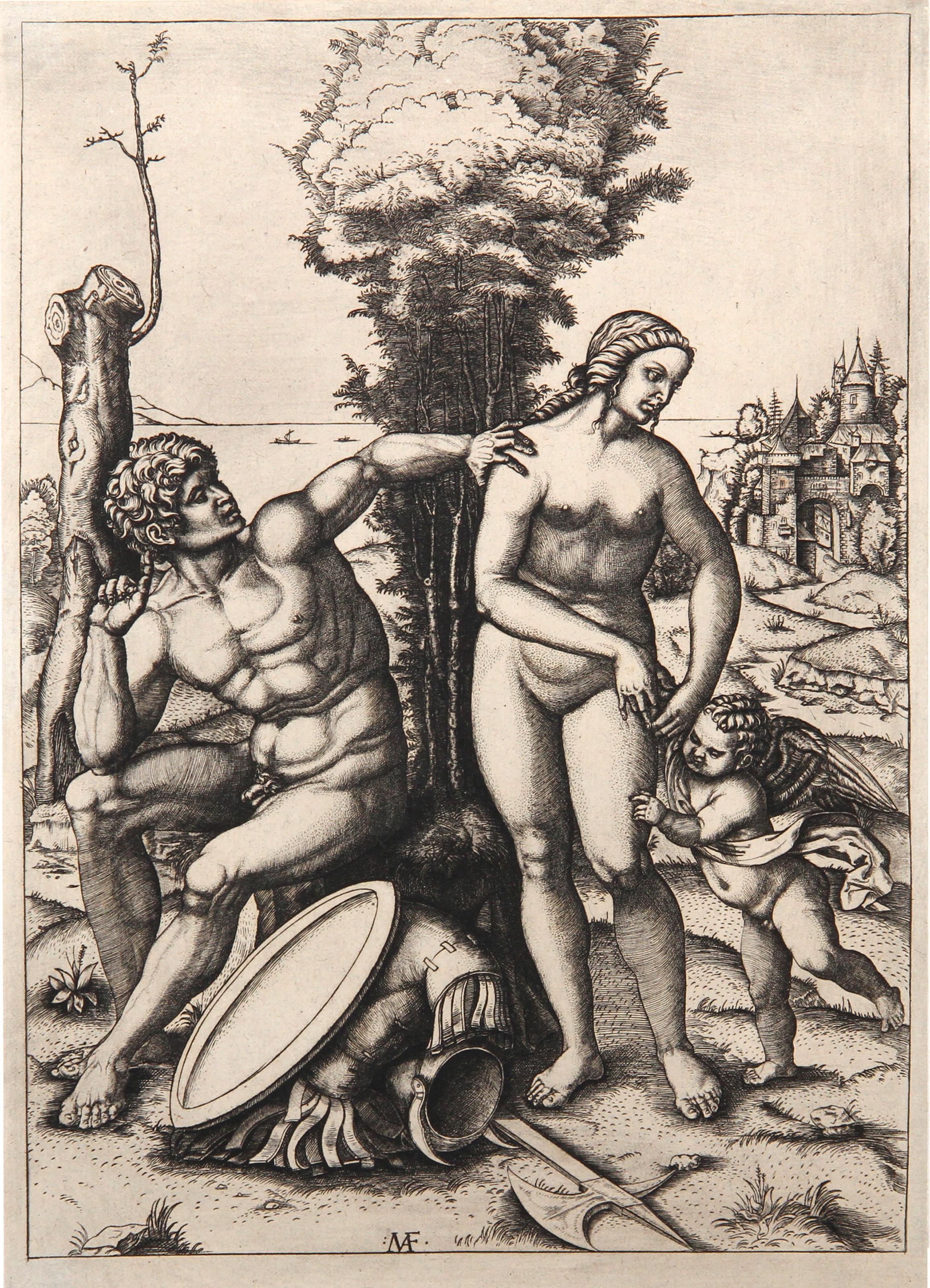
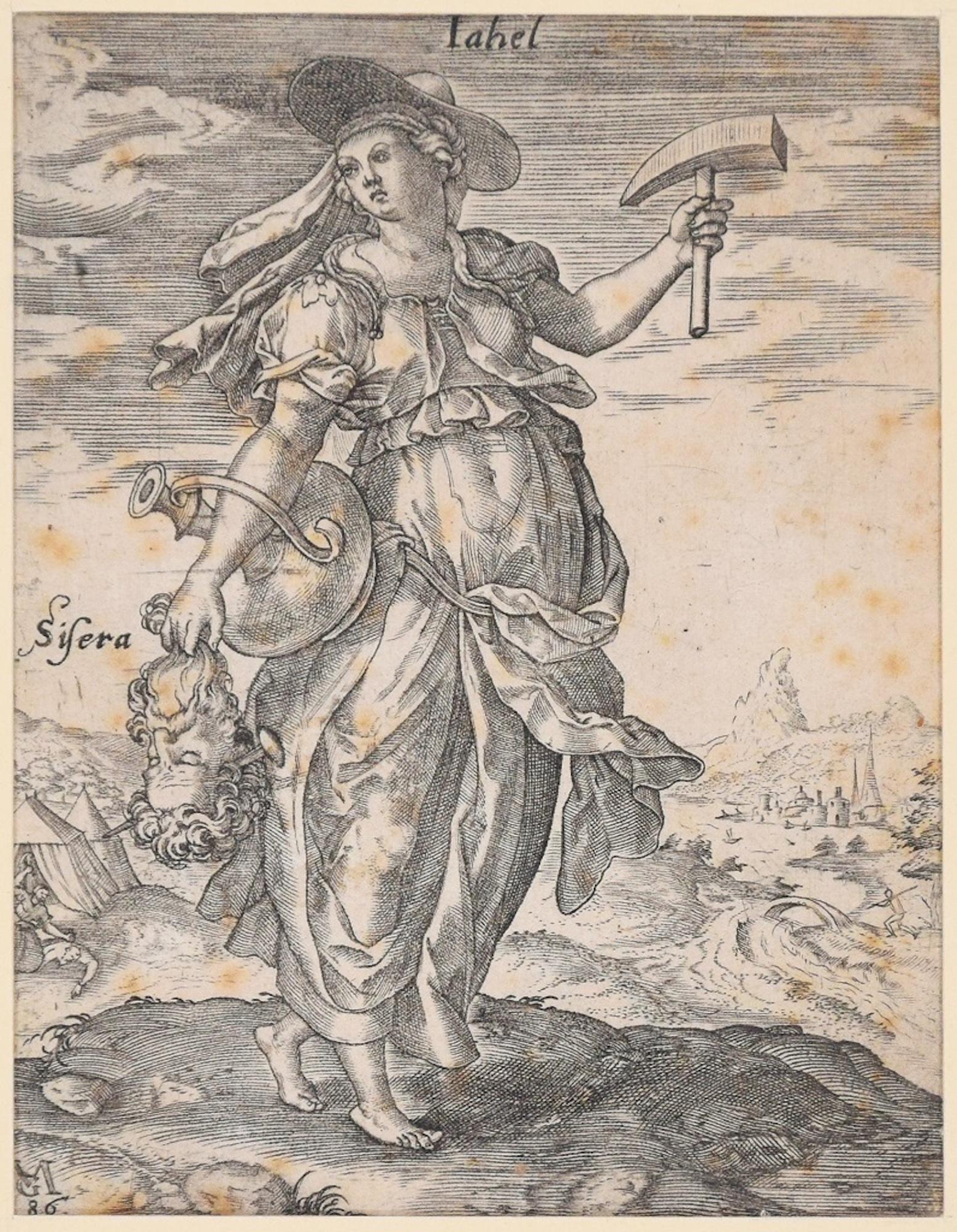
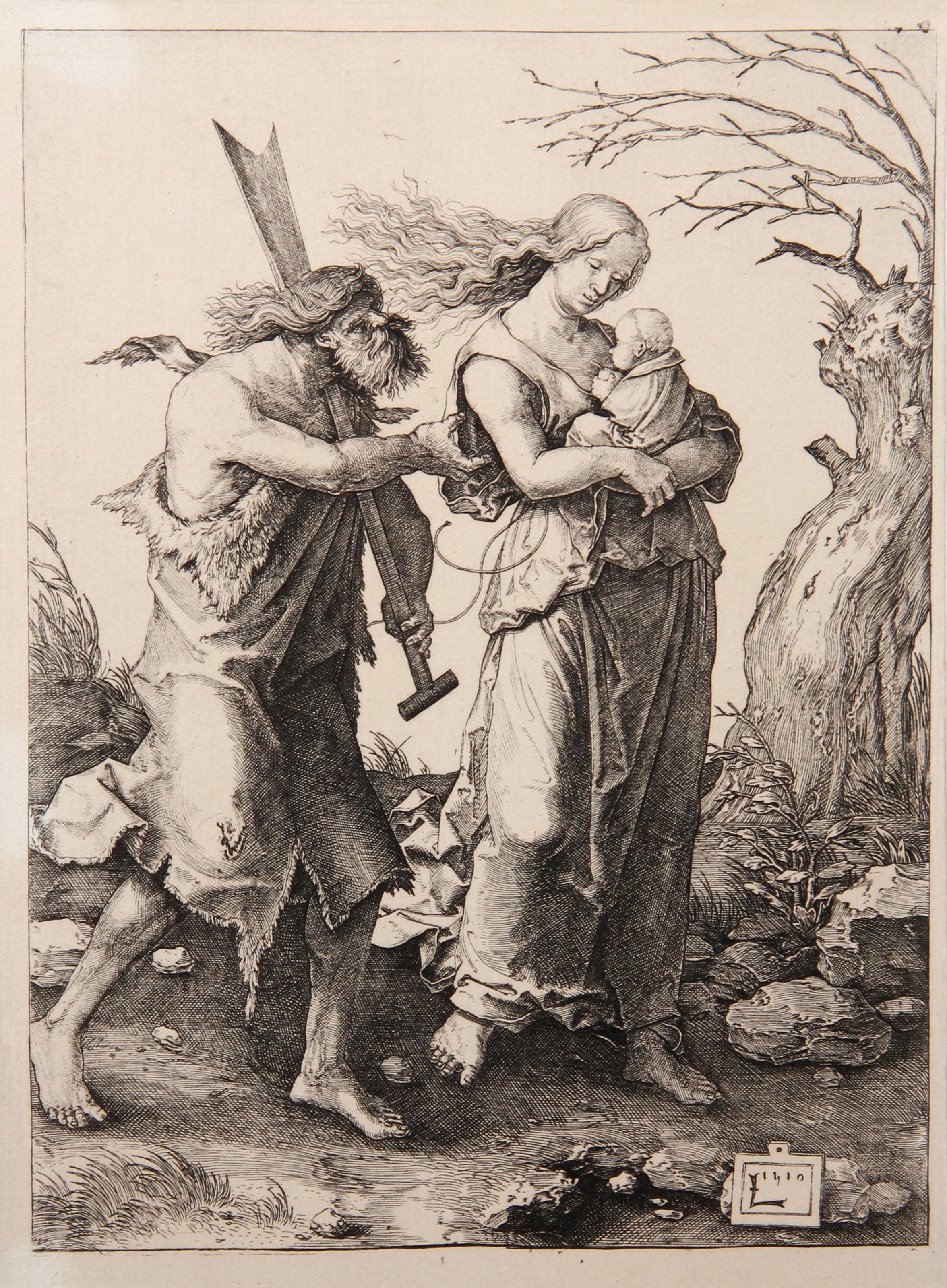
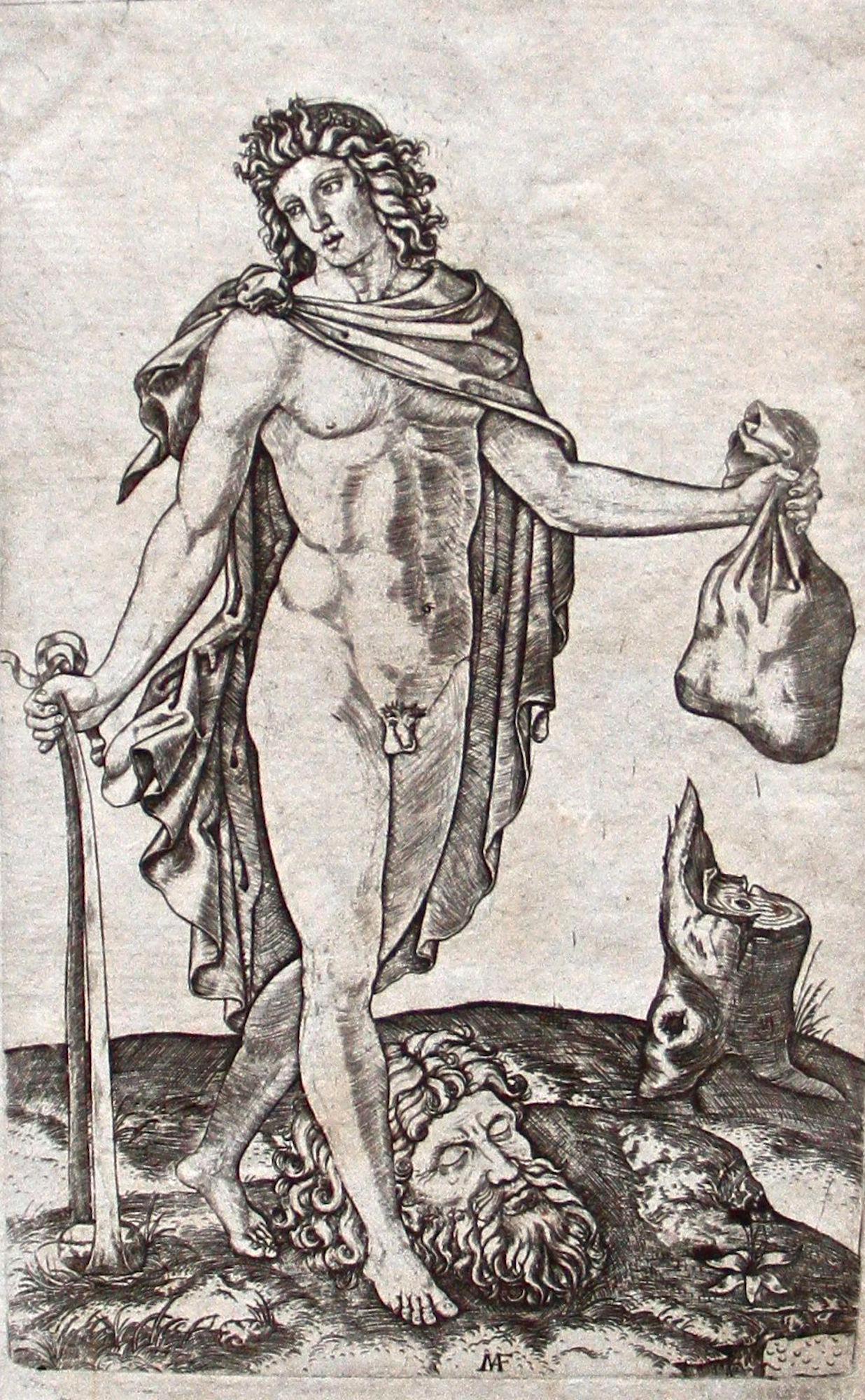
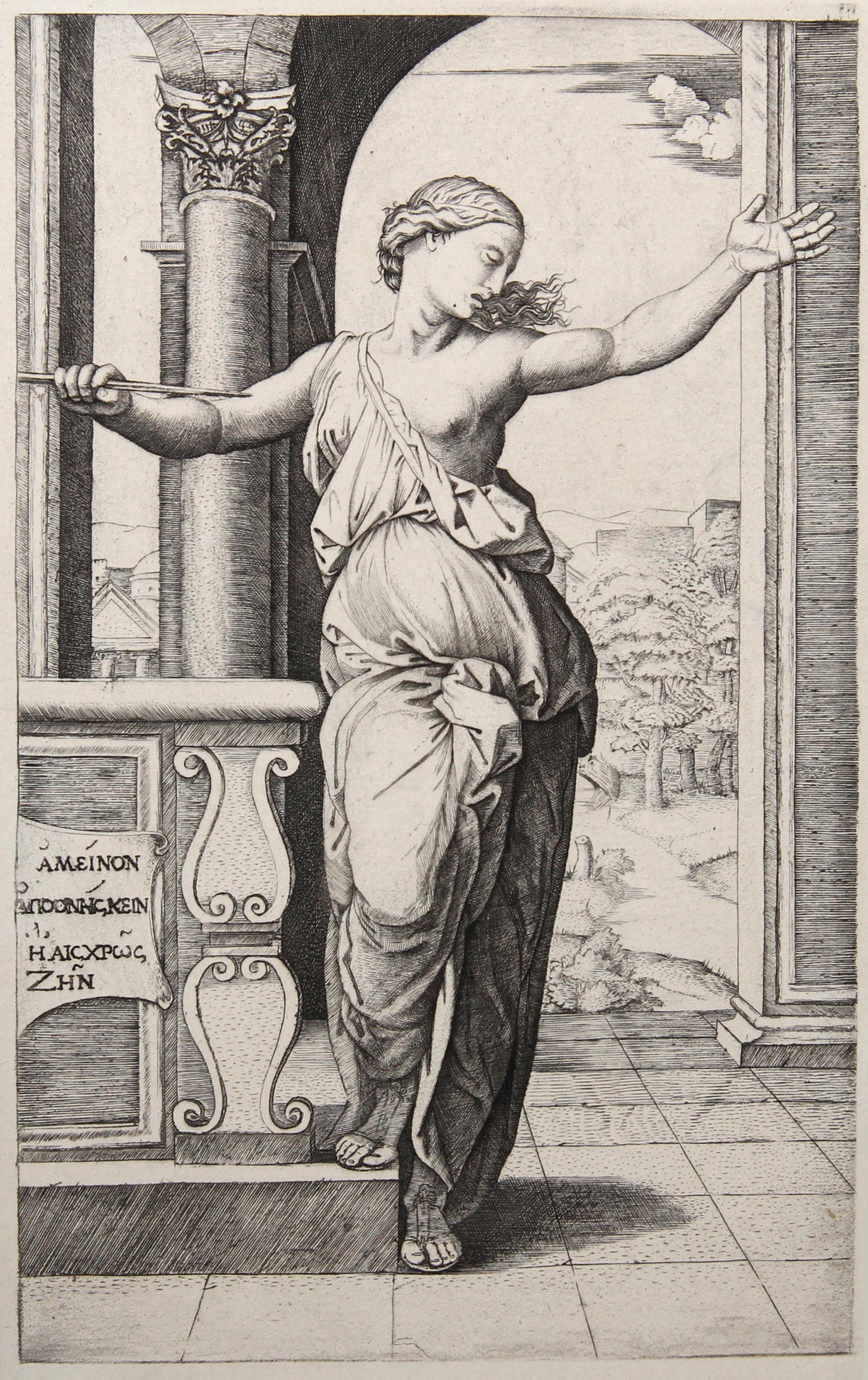
![The Garden of Love (after Peter Paul Rubens [1577-1640]](https://a.1stdibscdn.com/christoffel-jegher-1596-1652-3-netherlands-prints-works-on-paper-the-garden-of-love-after-peter-paul-rubens-1577-1640-for-sale/a_140/a_147163221719706543029/FA1849_montage_master.jpg?width=240)
